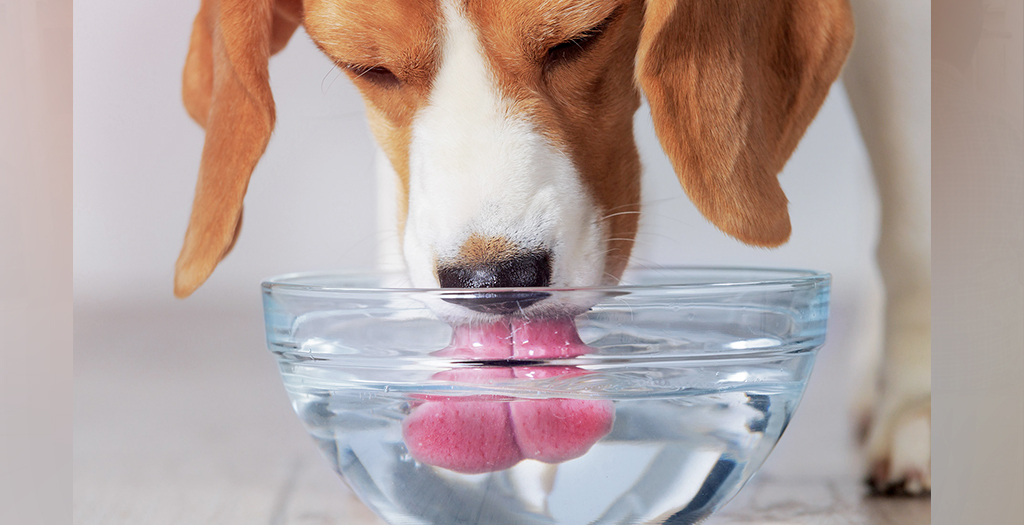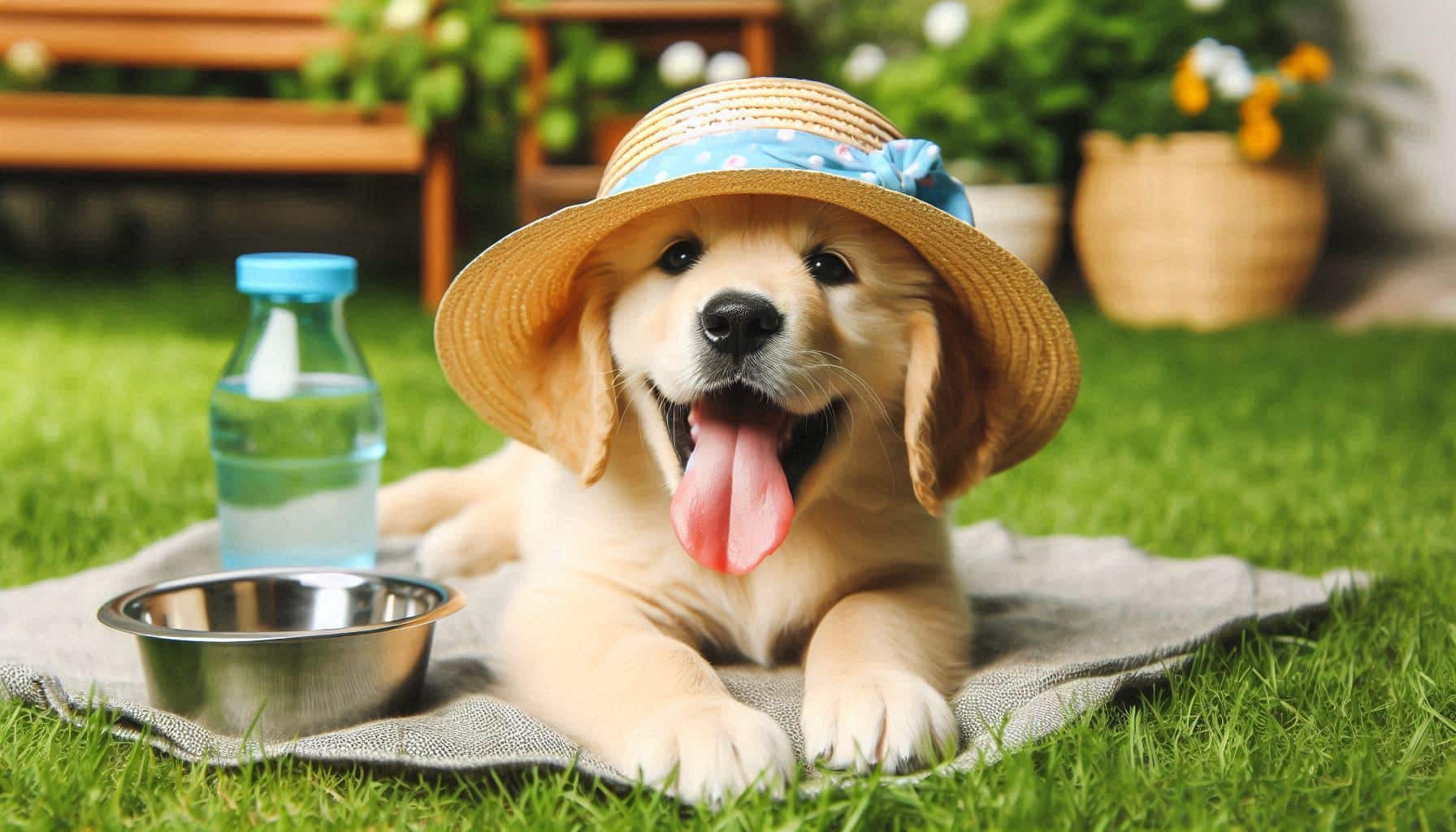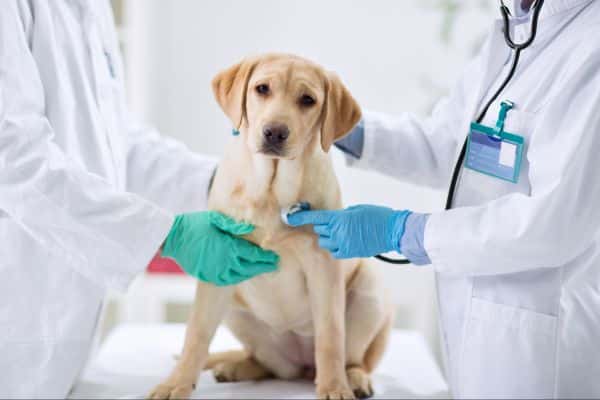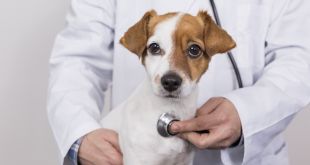As global temperatures rise and weather patterns intensify, our dogs struggle to keep up with the changing climate. And be noticed! Dehydration in dogs can lead to severely fatal outcomes if not taken care of.
Introduction to Dehydration in Dogs
Unlike humans, who cool down through sweating and increased hydration, dogs face significant hurdles in regulating their body temperature efficiently. In an unfavorable environment, this vulnerability can rapidly lead to dehydration in dogs.
A brief overview of dehydration in dogs.
Dehydration in dogs is simply losing more fluid than they take in. After all, water is crucial for our furry best buddies as it is for all mammals. It keeps their joints lubricated, organs cushioned, digestion smooth, and body temperature functional. But when they don’t get enough of this transparent elixir, these vital functions can misfire, leading to serious illness—even “ruff” outcomes.
When a dog becomes dehydrated, their whole system starts running on empty tanks. Their energy level drops significantly, they become so weak that they might not go for the daily walk or walk dizzy, and their skin loses elasticity. If dehydration isn’t treated at the right time, it can mess with their kidneys and even put a strain on their heart.
Importance of recognizing and treating dehydration promptly
As your pet’s hooman, keeping your cuddle buddy well-cared for and healthy is your job. Pay attention to their drinking habits – make sure they’re lapping up enough water, watch their panting rhythms- that’s their way of telling you if they’re feeling the heat too much, and watch out for signs like tummy troubles like diarrhea and vomiting.
You can also look out for signs like dry gums, thick saliva, lethargy, or sunken eyes—those are serious red flags that your pup might be in dire need of water or even a veterinary visit.
If your dog has been out in the heat for too long without enough water or has been functioning like a working dog, sniffing every crotch it can find, it might soon start feeling as sluggish as a sloth. Remember, a tired dog is a happy dog, but a well-hydrated dog is a healthy dog!
Along with veterinary care, below are some home remedies for your dehydrated canine friend.
Home Remedies and Treatments for Dehydration in Dogs
Offer Fresh, Cool Water
It feels foolish to mention this, but here we go. It is obvious to offer more water when there is less water intake and more water released. Maybe your dog is unable to find the water at the right place and at the right time to hydrate himself. So, keep a source of fresh and cool water for your pup, which is always available.
Ice Cubes
If you have a dog that turns its nose at plain water, be assured you are not alone. Some dogs just aren’t a big fan of plain water, or maybe it’s just not cool enough. Dogs cool down by panting, and if the water isn’t cooling their tongue, it won’t cool their body.
In such a scenario, try giving them some chilly, icy water popsicle. It’s a fun way to sneak in some hydration and cool down your pooch’s engine. Give them appropriately sized cubes—you don’t want your dog to choke or fracture their teeth.
So, next time your dog gives you that “not thirsty” look, toss them an ice treat and watch them chill out in no time!
Pedialyte or Electrolyte Solution
When dehydrated, your vet may recommend adding a Pedialyte solution to your dog’s water to help replenish the lost electrolytes. However, be careful, as the solution needs to be unflavoured and diluted with water to be safe for dogs.
A pedialyte solution is affordable and readily available. Skip the flavored versions, though—dogs aren’t into artificial sweeteners! Instead, we have a solution for you—not for sale, but to get creative!
You can create your own electrolyte solution at home. Take four pints of boiled water and cool it down. Later, add 1 teaspoon of salt and 4 teaspoons of sugar and stir until dissolved. Lastly, serve the solution at body temperature or cooled with some ice.
Broth (Chicken or Beef)
Dehydration in dogs can also be treated at home by whipping up broth soups. They are easy to make, and your dog will love them, thinking they are his gourmet protein meal with a hydration boost.
However, following this idea requires limiting the seasoning. Opt for unseasoned, unsalted, or low-sodium broth, as more sodium can worsen your dog’s dehydration. Understand that we are talking about dog health, not MasterChef!
Start by giving small amounts to gauge your dog’s interest and tolerance. Too much broth can lead to gastrointestinal upset, so cook it, keep it cool, and watch your pup slurp it up happily.
Watermelon or Cantaloupe
Being omnivorous, dogs can enjoy some watery fruits on hot afternoons. Dogs usually love fruits but avoid toxic ones. Thankfully, many hydrating fruits are non-toxic.
A watermelon is one such hydrating hero, with 92% water content. It’s like giving your dog a refreshing drink disguised as a treat! Just remove the seeds and rind, which are hard to digest. Bonus: Watermelon is also low in calories, making it a guilt-free treat.
Cantaloupe is another fantastic option with high water content and rich in fiber, providing vitamins B6, A, and C. It not only hydrates but also supports digestion in your dog. If not diabetic, your bestie would love the sweet taste; just manage the seeds and rind properly to keep things safe.
Yogurt (Plain, Unsweetened)
We’ve all heard it—most dogs are lactose intolerant and struggle to digest milk and other dairy products. But yogurt? Now that’s a different story. Your furry friend can enjoy plain, unsweetened yogurt; just make sure it’s xylitol-free.
Xylitol-free yogurt is like a magic treat for dogs. It helps with hydration and digestion, thanks to the probiotics that keep their gut healthy. Plus, its creamy texture makes it a snack they’ll love. Try serving a small spoonful or mix a few tablespoons into their regular food for a hydrating and nutritious boost. Your pup will think they’ve hit the jackpot!
Coconut Water
Our dog’s favorite place is often a beach, where he can run, jump, and splash his hooman. Do you know what he likes on the same beach? Coconut water. Coconut water is a natural source of electrolytes and a special hydrating treat for your dog. It is also full of antioxidants that support your dog’s immune system and keep its skin healthy.
This low-fat, low-calorie treat is filled with nutrients like potassium, sodium, and magnesium. However, have some moderation, as too much of these minerals can cause an upset stomach. Ensure the coconut water is pure with no sneaky sugars or flavors in it. Your pup will definitely feel like they’re on vacation.
Wet Dog Food
Switching to wet dog food is like giving your pup a hydration boost with every bite! It’s packed with more moisture than dry kibble, perfect for those hot days or for dogs who act like water is lava. It also contains more protein and fat, so make sure to consider their diet.
Want to create a magical hydrating recipe for your dog..? Add a bit more water to the meal. It will create dog soup for your pooch. However, Ensure the wet food is top-notch and fits your dog’s diet. If it is, your furry friend will be lapping it up and staying hydrated.
Monitor Closely
Observing your dog’s behavior and physical condition is critical to avoiding and managing dehydration. Many working dogs suffer from dehydration because they are so task-oriented that they sometimes forget they need to stay hydrated as well. Also, on hikes that your dog is not used to, he might get overexcited and overheat its core.
In such cases, look for signs like rapid panting, dry gums, and thick saliva. Ensure they always have quick access to fresh water and track how much water they’re drinking. Regularly check their urine color and frequency—dark yellow or concentrated urine can be a sign of dehydration.
Also, don’t forget to monitor their overall mood and energy levels. If your usually bouncy buddy seems sluggish, it might be a red flag of dehydration. Noting these little details can make a huge difference in keeping your furry friend healthy and hydrated this summer.
Seek Veterinary Care for Severe Cases
Some symptoms are more serious than others. If your dog has been vomiting constantly after eating food and is always sleepy with sunken eyes, don’t wait anymore—get it to the vet immediately. Your pooch might need a charging dose of IV fluids to hydrate it fast and get those electrolytes back in check.
Remember, dehydration can be just the beginning of a series of severe problems for your dog. In such scenarios, a vet visit becomes crucial. Only a vet’s thorough check-up can uncover what’s happening with your dog and ensure your pup returns to its tail-wagging self.
Our Advice: Trust your gut. If something seems off, it’s always better to be safe than sorry.
8 Symptoms of Dehydration in Dogs
Here are some symptoms to identify dehydration in dogs:
Loss of appetite:
Your dog might skip meals or show less interest in food. It’s a sign they might be feeling off or just dehydrated.
Dry nose:
Contrary to popular belief, a dry nose doesn’t always mean your pup is sick. It can just be a sign they need a drink!
Dry, sticky gums:
Check their gums—sticky gums could indicate dehydration or an underlying issue.
Loss of skin elasticity:
The easiest way to confirm dehydration in dogs is to pinch and pull their skin and release it. If the skin doesn’t bounce back within 2 seconds, it could mean they’re dehydrated.
Excessive panting:
Dogs try to cool down by panting; if they are panting non-stop, understand that they might be overheated or dehydrated.
Sunken eyes:
You know, your dog’s pupil has a vast universe in itself. However, if their eyes look vague and lost, your pooch might be looking for water.
Reduced urination (dark yellow or concentrated urine):
Dark or strong-smelling urine suggests they need more water. Think of it as their body trying to concentrate on what little water they have left.
Vomiting (in some cases):
Usually, vomiting signifies many problems; however, all of them suggest that fluids are being lost and that a visit to the vet is necessary.
Conclusion
Here, we covered a lot about keeping our pooches hydrated throughout the scorching days of summer and beyond. Remember, hydration is not just about quenching their thirst. It’s vital for overall well-being. From joint lubrication to digestion and blood circulation to cooling down. Here’s a quick recap of the home remedies and treatment hacks we’ve shared to keep your dog well-hydrated.
Begin with simple yet crucial adjustments, always keep fresh, cool water around your dog’s ideal places. If your dog does not like plain water, try ice cubes or chilled watermelon for a refreshing twist. Pedialyte or homemade electrolyte solutions can also be of significant help to replenish lost minerals; however, keep the precautions in mind as well. Don’t overdo it, as it might just create more imbalance. Broth and wet dog food are a pack of hydration punch that even the pickiest pup won’t be able to resist.
The blog is not just about getting your dog back into shape. You must also pay close attention to signs of dehydration, like excessive panting, dry gums, low energy, or vomiting. If your pooch is making too many excreta outings, maybe it’s time to call an appointment to see your vet. Remember, you know your dog well, so if you notice something off, trust your instincts and visit the vet as soon as possible.
So, what now? Go and refill your buddy’s water bowl with some cool fresh water, and add some ice to it to see your pooches’ reaction. If his tail starts to wag as soon as he drinks, you know the next big trick to ensure hydration in your pup. A reminder, a tail-wagging, fetch-loving, ball-chasing kind is the happiest kind of dog.
Do you have questions or tips of your own to share? Drop us a bark in the comments below and we’d love to hear how you keep your furry friend cool and hydrated. And don’t forget to share this guide with your fellow dog enthusiasts. Together, let’s make sure every doggo stays cool, hydrated, and ready for more adventures!

 DogExpress
DogExpress
























 in Chandigarh, India.
in Chandigarh, India. 
